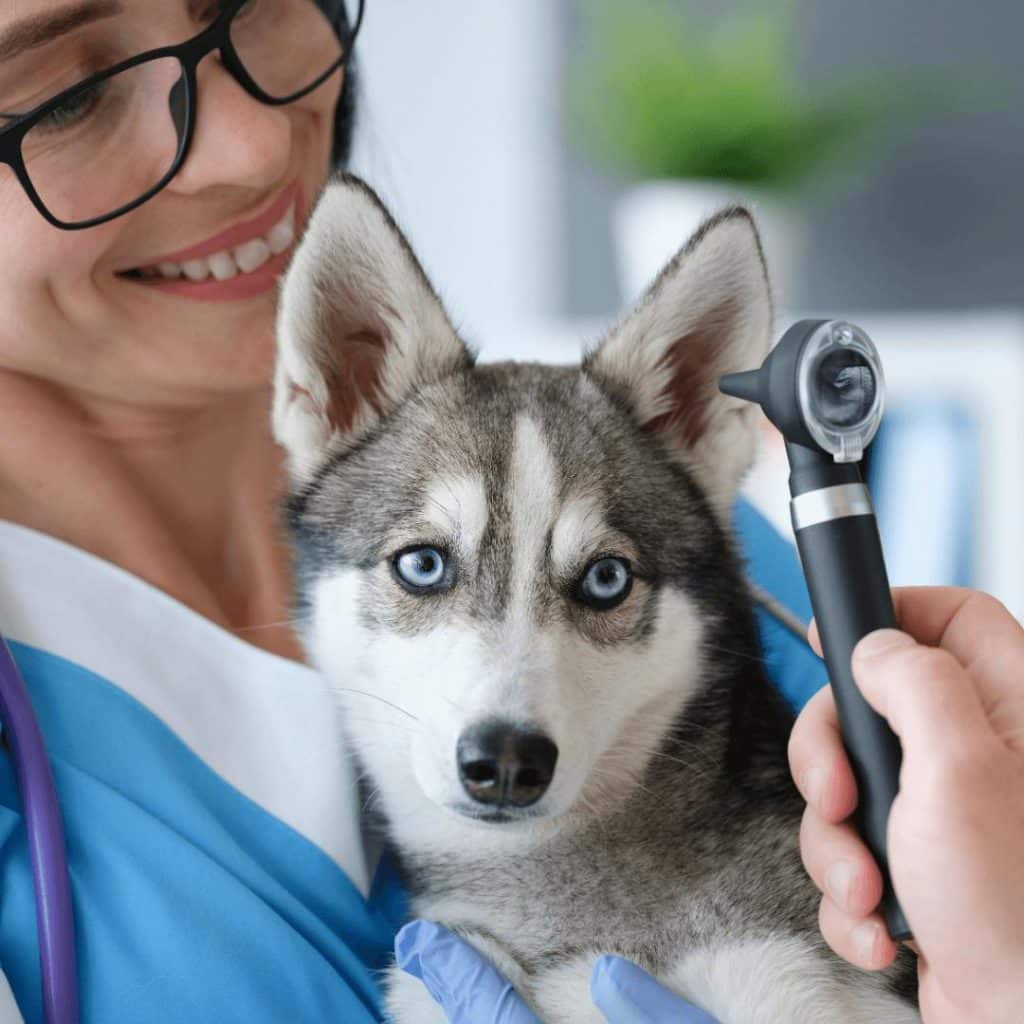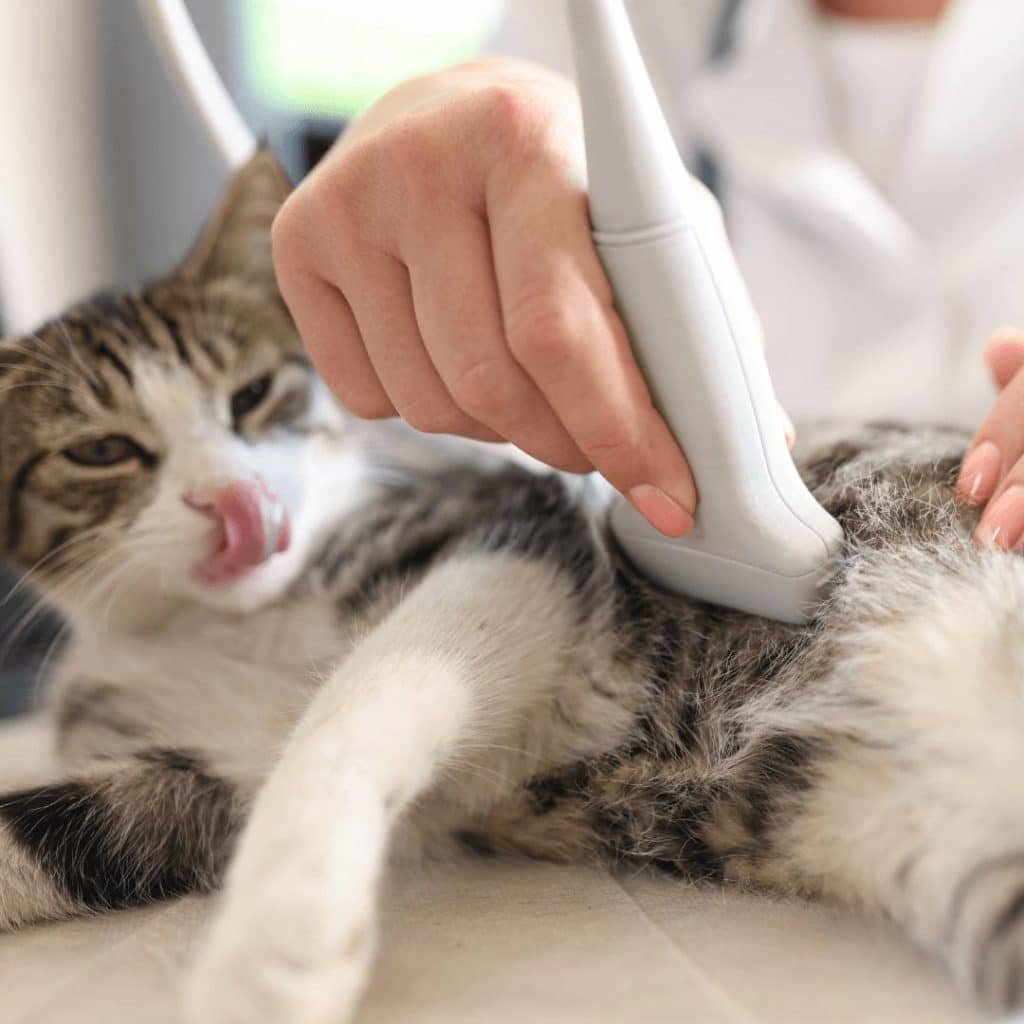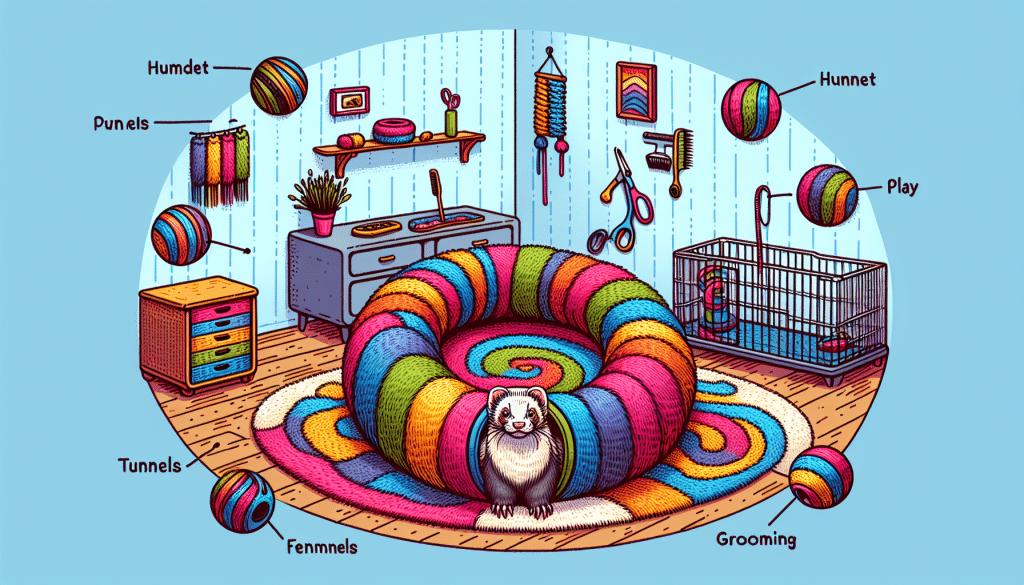This guide is your go-to for understanding pet behavior, whether you’re new to pet ownership or already experienced. It covers common issues in a variety of pets, including dogs, cats, birds, lizards, rodents, and fish. This guide offers practical tips and insights for handling pet behaviors aimed at enhancing your pets’ well-being.
Understanding Pet Behavior
To truly understand and bond with your pets, it’s essential to delve into the basics of pet psychology.
- Genetic and Breed-Specific Traits: Just like humans, pets inherit various behaviors from their ancestors. For instance, herding dogs like Border Collies are naturally inclined to herd. At the same time, certain cat breeds may be more friendly or independent. Understanding these inherent traits can help you better meet your pet’s needs and manage their behavior.
- Importance of Early Socialization: The early stages of a pet’s life are critical for its development. Puppies and kittens must be exposed to various people, animals, and environments to grow into well-adjusted adults. This socialization helps them become more adaptable and reduces fearfulness in new situations.
- Understanding Predatory Instincts: Many pets have an innate predatory drive.
It’s important to control dogs’ and cats’ instinct to chase or hunt to avoid unwanted behaviors.
- Energy Levels and Exercise Needs: Different breeds have varying energy levels. Breeds with high energy levels necessitate increased physical exercise and mental engagement. Lack of adequate exercise can lead to behavioral issues like destructiveness or hyperactivity.
- Training and Consistency: Consistent training using positive reinforcement techniques is vital. Rewarding pets for desirable behavior is more effective and strengthens the bond between pet and owner.
- Signs of Stress and Anxiety: Pets can experience stress and anxiety, which can manifest in various ways, such as changes in behavior or body language. Understanding these signs and how to address them is crucial for maintaining your pet’s well-being.
- Environmental Influence: The environment plays a significant role in shaping pet behavior. A stable, enriched environment can significantly reduce stress and prevent behavioral issues.
- Behavior Modification Techniques: Behavior modification techniques can be employed for problematic behaviors. These involve understanding the cause of the behavior and using appropriate training methods to address it.
- When to Seek Professional Help: Seeking help from professional trainers or behaviorists is recommended for complex behavior issues.
Understanding these critical aspects of pet behavior can create a more harmonious and fulfilling relationship with your pets.

| Species | Communication Styles | Resources |
| Dogs | Barks, tail wags, body language | American Kennel Club |
| Cats | Tail movements, ear positions | International Cat Care |
| Birds | Feather positions, vocal sounds | Avian Welfare Coalition |
| Lizards | Body language, like head bobbing | Reptiles Magazine |
| Rodents | Squeaks, nibbles, whisker twitches | Small Mammal Care Guides |
| Fish | Fin movements, swimming patterns | Aquarium Hobbyist Resources |
Communication Styles by Species:
Dogs: Decode your dog’s barks and tail wags. The American Kennel Club is like the doggy decoder ring, helping you understand what Fido’s saying.
Cats: Tail flicks and ear twitches – cats have their own language. Websites like International Cat Care are your cat whisperer guides.
Birds: Chirps, squawks, and feather fluffs – birds have much to say. The Avian Welfare Coalition helps you tune into their frequency.
Lizards: These cool reptiles communicate through body language like head bobbing. Reptiles Magazine is your go-to for lizard linguistics.
Rodents: Squeaks, nibbles, and whisker twitches – rodents are expressive. Look for resources that delve into the world of small mammals.
Fish: Believe it or not, fish have watery communication methods. Aquarium hobbyist sites can help you understand your finned friends.
Pet Psychology Basics: Breed and Species Traits
Gaining a deep understanding of your pet’s inherent traits is crucial for providing them with the best care possible.
Dogs: Each dog breed has unique characteristics influenced by their historical roles. For instance, retrievers are known for their loyalty and ease of training. At the same time, terriers possess high energy and an independent nature. These traits help you choose the right training and activities for your pet’s stimulation and activity.
Cats: Cat breeds range from the friendly Siamese to the more reserved Russian Blue. Understanding your cat’s breed traits helps you know if they like company or prefer alone time.
Birds: Bird species exhibit a wide range of temperaments and social needs. Parrots need social interaction, and finches are more independent. Meeting each bird’s social needs helps prevent issues like feather plucking or noise.
Lizards: Different lizard species have varied environmental and social requirements. For example, bearded dragons are generally more friendly.
They enjoy frequent handling, unlike some geckos who prefer solitude and get stressed with too much handling.
Rodents: Small mammals like rodents also have breed-specific behaviors. Guinea pigs are social animals that thrive in groups. In contrast, hamsters are primarily solitary and can become territorial if housed with others.
Fish: Fish species differ significantly in their environmental and social needs. Bettas are solitary and aggressive with others, while tetras get stressed if kept alone or in small groups.
Knowing breed and species traits is key to providing an environment that meets your pet’s needs and well-being. Doing so allows you to cater to their unique needs and foster a deeper, more meaningful bond with your pet.

Common Behavioral Issues in Pets
To maintain a good relationship with your pet, it’s important to know and address common behavior issues. This table offers a quick look at typical training challenges for different pets and where to find help.
| Species | Common Behavioral Issues | Training Difficulty |
| Dogs | Barking, chewing, digging, separation anxiety | Varies by breed |
| Cats | Scratching, litter box issues, aggression | Moderate |
| Birds | Feather plucking, aggression, screaming | High |
| Lizards | Aggression, feeding difficulties, stress signs | Moderate to High |
| Rodents | Biting, cage aggression, excessive chewing | Moderate |
| Fish | Aggression, overeating, stress indicators (like hiding) | Low |
Each species and individual pet within a species can exhibit unique behavioral challenges. For instance:
Dogs: Breeds like Labrador Retrievers might be easier to train due to their eager-to-please nature. On the other hand, breeds like the Afghan Hound may be more challenging to train due to their independent nature.
Cats: Siamese cats are often more social, while Russian Blues can be shy, needing different socialization and training approaches.
Birds: Parrots are smart and social, requiring a lot of mental stimulation to avoid behavior problems. In contrast, other bird species might have different social and environmental needs.
Lizards: The environment and how you handle them greatly affect lizard behavior. Some may require very specific habitat conditions to avoid stress-related behaviors.
Rodents: Species like guinea pigs might need social interaction with other guinea pigs to thrive. In contrast, hamsters are typically solitary and might show aggression if housed with others.
Fish: Community fish tanks can present challenges like territorial disputes and aggression, requiring careful species selection and management.
| Species | Easiest to Train | Hardest to Train | Resources |
| Dogs | Labrador Retriever, Beagle | Afghan Hound, Chow Chow | AKC, Cesar’s Way |
| Cats | Siamese, Abyssinian | Persian, Russian Blue | Feline Advisory Bureau |
| Birds | Large cages, toys | Avian Care Websites | Bird Channel |
| Lizards | Temperature-controlled | Herpetology Journals | Reptiles Magazine |
| Rodents | Exercise wheels, tunnels | Rodent Care Guides | Rodent Enthusiast Blogs |
| Fish | Properly Sized Aquariums | Aquarium Care Books | Freshwater and Marine Aquariums |
Training Tips and Techniques
Discover breed and species-specific training advice. Use positive reinforcement and check out resources like the Humane Society for training tips.
Effective pet training involves understanding their specific needs and behaviors. Here are key training tips and techniques for pets, advised by the ASPCA and other experts:
Dogs: Training a dog requires consistency, patience, and positive reinforcement. It is important for puppies to socialize. Exposure to different people, animals, and environments helps them become well-adjusted adults. Clicker training, which marks and rewards desired behavior, is very effective. Training leash-reactive dogs and tackling separation anxiety with gradual, reward-based methods is important.
Cats: Training cats differs significantly from training dogs. Addressing cat behavior problems involves environmental management and understanding their communication methods.
Providing and promoting the use of scratching posts can prevent cats from scratching furniture. Remote correction and sounds can be deterrents for destructive behaviors. Additionally, positive behavior can be enforced using clicker training.
Birds: Bird training focuses on social interaction and mental stimulation. The ASPCA recommends engaging in activities that cater to a bird’s natural behaviors, such as foraging and exploring. Offering treats or praise for desired behaviors is an effective positive reinforcement. Training should always be consistent and patient, avoiding any form of punishment.
Lizards: Lizard training primarily involves handling and environmental management. Gentle, consistent handling can help lizards become more accustomed to human interaction. Still, it’s crucial to understand each species’ specific needs and stressors. Providing hiding spots and climbing structures as environmental enrichment can improve their behavior.
Rodents: Training rodents includes creating a stimulating environment and handling them gently. They’re smart and enjoy puzzle toys and activities that resemble their natural foraging.
Fish: While training fish is more about tank management, understanding each species’ needs is crucial. An environment with plants, hiding spots, and companions helps reduce stress behaviors. Regular maintenance of the tank’s ecosystem is also essential for their well-being.
Each pet has unique needs; understanding these is key to effective training and a harmonious relationship with your pet. Remember, being patient and consistent is key, and it’s wise to consult a professional trainer or behaviorist if unsure.

Environmental Factors and Mental Stimulation
Learn how to create the ideal habitat for each pet type, ensuring both physical and mental well-being.
| Species | Habitat Needs | Resources |
| Dogs | Spacious, secure area | Dog Care Journals |
| Cats | Climbing structures | Cat Enthusiast Magazines |
| Birds | Large cages, toys | Avian Care Websites |
| Lizards | Temperature-controlled | Herpetology Journals |
| Rodents | Exercise wheels, tunnels | Rodent Care Guides |
| Fish | Properly Sized Aquariums | Aquarium Care Books |
Dealing with Specific Issues
Addressing unique behavioral challenges in pets requires specific strategies tailored to each species. Based on expert advice from sources like the ASPCA, here are solutions for common pet issues.
Dogs
Aggression: Understand triggers and consult professionals for behavior modification.
Separation Anxiety: Implement a desensitization and counterconditioning program.
Excessive Barking: Identify causes and apply appropriate training methods.
Destructive Chewing: Remove temptations, provide chew toys, and use anti-chew sprays.
Cats
Destructive Scratching: Offer scratching posts, trim nails, and avoid declawing.
Aggressive Behavior: Address underlying causes such as illness or routine changes.
Excessive Meowing: Identify the reason and ensure the cat’s needs are met.
Nocturnal Activity: Engage in play before bedtime and provide interactive toys.
Birds
Feather Plucking: This can signify boredom, anxiety, or medical issues. Enrichment activities, a stable environment, and veterinary consultation are key.
Aggression may stem from hormonal changes, fear, or territorial behavior. Understanding the bird’s body language and consulting an avian behaviorist is recommended.
Screaming: Often a call for attention or due to lack of stimulation. Regular interaction and mental stimulation through toys and puzzles can help.
Lizards
Aggression can be due to territorial behavior, fear, or improper handling. Ensure adequate space and environmental enrichment. Handling should be gradual and respectful of the lizard’s comfort level.
Feeding Difficulties: This can indicate stress or illness. Verify habitat conditions (temperature, humidity) and consult a veterinarian specializing in reptiles.
Stress Signs: Includes changes in color, appetite, or activity level. Reducing stress involves addressing its causes, keeping a stable environment, and handling less.
Rodents
Biting: This may indicate fear or stress. Gentle handling and avoiding sudden movements can build trust.
Cage Aggression: Often due to territorial behavior or overcrowding. Ensure adequate space and environmental enrichment.
Excessive Chewing: Provide appropriate chew toys to satisfy their gnawing instinct and protect household items.
Fish
Aggression: Common in overcrowded tanks or with incompatible species. Research species compatibility and provide adequate space.
Erratic Swimming: This can be due to poor water quality or illness. Regular tank maintenance and water quality checks are essential.
Lack of Appetite could indicate stress, poor water conditions, or illness. Ensure proper tank conditions and consult a veterinarian if needed.
Overcrowding Stress: Ensure the tank is appropriately sized for the number and type of fish.
For all pets, persistent or severe behavioral issues warrant professional consultation. Veterinarians can identify health problems, while behaviorists provide specific behavior solutions. Patience and understanding are vital in addressing pet behavior issues across all species.

When To Seek Professional Help
Knowing when to get professional help for your pet’s behavior is key for their health and your comfort. Here’s some expert guidance based on information from the ASPCA:
General Indicators
Persistent or Worsening Behavior: If a behavior problem persists despite your efforts or worsens, it’s time to consult a professional.
Risks of Injury: If your pet’s behavior poses a risk of injury to themselves, other pets, or people, professional intervention is necessary.
Significant Stress: If your pet or family is very stressed or anxious due to a behavior, it’s worth getting a professional’s opinion.
Behavioral Changes: Sudden changes in behavior can indicate underlying issues that require professional evaluation.
Specific Situations Requiring Professional Help
Aggression: Any form of aggression, whether it’s towards people, other pets, or over resources, should be addressed by a professional.
Severe Anxiety or Phobias: Issues like severe separation anxiety or phobias (e.g., noise phobia) often require a specialized treatment plan.
Compulsive Behaviors: Compulsive behaviors can indicate deeper issues such as excessive licking, tail chasing, or pacing.
Inappropriate Elimination: Persistent house soiling in cats and dogs can be complex and may have medical causes.
Excessive Vocalization: Constant barking, howling, or meowing that doesn’t stop with basic training.
Choosing the Right Professional
Trainers vs. Behaviorists: A certified trainer may suffice for basic training and manners. However, there are cases wherein serious behavior issues may occur. For this, seeking help from an animal or veterinary behaviorist is recommended.
Certification and Qualifications: Look for professionals with proper certifications, such as Certified Professional Dog Trainers (CPDTs), Certified Applied Animal Behaviorists (CAABs), or Diplomats of the American College of Veterinary Behaviorists (Dip ACVBs).
Referrals and Reviews: Ask your vet for recommendations and look up reviews or feedback on the professional’s services.
Collaborative Approach: A good professional will collaborate with your veterinarian to rule out or treat any medical issues related to the behavior.
Puppies: Special Consideration
Bite Inhibition Training: Early intervention is vital for puppies, especially for bite inhibition. Puppies learn bite inhibition through interaction with other puppies and humans. If your puppy is biting too hard during play, using techniques such as yelping and then ignoring the puppy can be effective. If these methods are not working, a professional trainer can provide guidance.
Remember, getting professional help is a responsible way to care for your pet and family. Early help for behavior issues can stop them from getting worse.

Preventive Measures and Regular Care
Regular routines, exercise, check-ups, and preventive care maintain your pet’s health and happiness.
General Preventive Care
Routine Services: There are routine services done to help avoid sickness in pets. Services like regular vaccines, flea and tick treatments, heartworm prevention, and dental cleanings.
Weight Management: Regular wellness exams help manage your pet’s weight, reducing the risk of health issues like joint pain or kidney disease.
Early Detection: Annual wellness exams and screenings can detect health issues in the early stages, leading to better outcomes.
Cats: Regular vet visits are crucial as cats often hide their symptoms when sick or injured.
| Species | Routine and Health Tips | Resources |
| Dogs | Regular walks, vet visits | Dog Health Forums |
| Cats | Playtime, grooming | Cat Health Websites |
| Birds | Social interaction | Bird Health Publications |
| Lizards | UV light, diet control | Reptile Health Blogs |
| Rodents | Enrichment activities | Small Mammal Veterinary Guides |
| Fish | Tank maintenance, feeding | Fishkeeping Magazines |
Dogs
Feeding: Puppies need different feeding schedules than adult dogs. Quality food and clean, fresh water should always be available.
Exercise: Dogs require regular exercise to stay healthy and avoid boredom, which can lead to destructive behaviors.
Grooming: Regular brushing helps reduce shedding and the risk of skin issues. Check for fleas and ticks often.
Housing: Provide a warm, quiet place to rest away from drafts and off the floor.
Licensing and Identification: Ensure your dog has a license, ID tag, and microchip or tattoo for identification.
Cats
Feeding: Quality food in appropriate amounts is essential. Avoid excessive ‘people food’ as it can lead to health issues.
Exercise: Engage cats in play to satisfy their hunting instincts and keep them active.
Grooming: Regular brushing and check-ups for fleas and ticks are important. Cats generally require less bathing than dogs.
Housing: Provide a comfortable, stress-free environment. Cats enjoy high perches and secluded spots.
Birds
Diet: A well-balanced diet is crucial. Avoid feeding birds avocado, chocolate, and other toxic foods.
Exercise: Ensure they have space to fly or roam around safely.
Mental Stimulation: Provide toys and interaction to prevent boredom and feather plucking.
Lizards
Habitat: Maintain appropriate temperature and humidity levels. Provide hiding spots and climbing structures.
Diet: Ensure a well-balanced diet suitable for the species.
Handling: Handle gently and only when necessary to minimize stress.
Rodents
Housing: Provide a spacious cage with burrowing, climbing, and hiding opportunities.
Diet: Provide species-appropriate food and fresh water.
Exercise: Exercise wheels and tunnels can help maintain physical health.
Fish
Tank Maintenance: Regular cleaning and water quality checks are crucial.
Diet: Feed appropriate food in the correct quantity.
Environment: Ensure adequate space, proper filtration, and compatible tank mates.
Routine Check-Ups
Regular vet check-ups help catch health issues early and ensure vaccinations are current. This proactive approach can extend your pet’s life and enhance their quality of life.
The Importance of Spaying and Neutering
Spaying and neutering prevent unwanted litters and improve health and behavior. Adhering to these preventive measures and regular care routines will help ensure your pets live long, healthy, and happy lives. Always talk to your vet for specific advice and concerns about your pet’s needs.
Takeaway
The pet behavior guide is crucial for owners, offering insights into the behaviors and psychology of pets such as dogs, cats, birds, and more. It emphasizes knowing breed traits and early socialization for improved pet relationships.
The guide advocates for tailored, positive training to strengthen bonds between pets and owners. It highlights the need for professional help with challenging pet behavior issues and guides on choosing experts.
Routine care, exercise, check-ups, and preventive measures are vital for pet health. The guide focuses on a positive environment and mental engagement to reduce pet stress and behavior issues.
The guide urges pet owners to care for their pets responsibly, leading to a happy and mutually rewarding relationship.
Frequently Asked Questions
- Why is understanding breed-specific traits important?
Understanding different breeds’ unique traits and needs is essential for effective pet care and training. - What role does early socialization play in pet behavior?
Early socialization helps puppies and kittens adapt better and be less scared in new situations. - How can I address my pet’s behavioral issues?
Addressing behavioral issues involves using species-specific solutions and positive, consistent training methods. For persistent or complex issues, seeking professional help is recommended. - What is the importance of regular routines and exercise for pets?
Regular routines and exercise are crucial to keep pets healthy and prevent behavior issues like stress or destructiveness. - When should I seek professional help for my pet’s behavior?
Seek professional help for persistent, worsening, or stressful pet behavior issues that could cause injury. Also, seek help for sudden behavioral changes. - What preventive measures should I take for my pet’s health?
Regular vet visits, vaccinations, spaying/neutering, and weight control are vital for your pet’s health. - How do I create a suitable environment for my pet?
Provide mental stimulation, proper habitat, and a safe, stress-free area for a good pet environment. - Can pets experience stress and anxiety?
Yes, pets can experience stress and anxiety, which can manifest in various behaviors or body language. It’s important to recognize these signs and address them appropriately. - What is positive reinforcement in pet training?
Positive reinforcement rewards good behavior to promote repetition and improve the pet-owner relationship. - How can I prevent stress and behavioral issues in my pet?
Prevent pet stress and behavior issues with a positive setting, mental stimulation, exercise, and health care
References:
Best Friends Animal Society: Offers basic resources for dog care and training, including dealing with specific behavior and training issues like barrier aggression, chewing in dogs, collar sensitivity, and crate training. More details can be found at Best Friends Animal Society.
American Veterinary Medical Association (AVMA): Provides resources for pet owners, including advice on nutrition, behavior, pet weight and exercise, and more. You can explore these resources at the American Veterinary Medical Association.
Found Animals: Offers a comprehensive collection of pet care resources, covering everything a modern pet parent needs to know about pet safety, training, and behavior. Additional information can be found at Found Animals.
Animal Humane Society – Pet Behavior Library: Offers a variety of information on solving common pet behavior problems, such as litter box issues and aggression in cats, managing nocturnal behavior, and transitioning outdoor cats to indoor life. Visit the Animal Humane Society Pet Behavior Library.
ASPCA – Behavioral Help for Your Pet: Offers help for natural behaviors in dogs and cats that can be challenging for pet parents, like barking, meowing, and scratching. ASPCA’s Behavioral Help for Your Pet.
PAWS – Pet Behavior Help: Their online Resource Library contains information on a variety of cat and dog behavior topics, encouraging exploration of the library for common behavior concerns. PAWS Pet Behavior Help.
American College of Veterinary Behaviorists (ACVB): Certifies veterinarians who are specialty trained to advance the behavioral health of animals through clinical practice, research, and education. American College of Veterinary Behaviorists.



